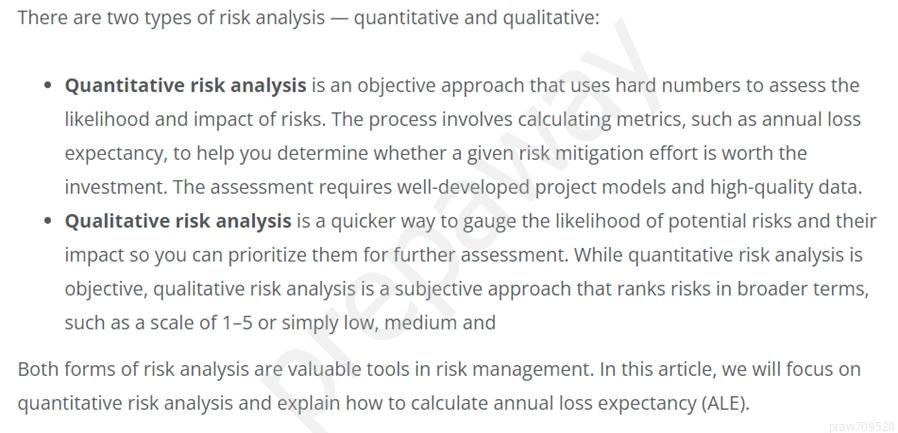ARO Calculation for Successful Breaches
Question
A security engineer estimates the company's popular web application experiences 100 attempted breaches per day.
In the past four years, the company's data has been breached two times.
Which of the following should the engineer report as the ARO for successful breaches?
Answers
Explanations
Click on the arrows to vote for the correct answer
A. B. C. D.A.
https://blog.netwrix.com/2020/07/24/annual-loss-expectancy-and-quantitative-risk-analysis/
ARO stands for Annualized Rate of Occurrence, which is the estimated frequency at which a threat event will occur within a year. In this case, the question is asking for the ARO for successful breaches.
The security engineer estimates that the web application experiences 100 attempted breaches per day, which translates to 36,500 attempted breaches per year (100 x 365). However, the question is not asking for the ARO of attempted breaches, but for successful breaches.
The question states that the company's data has been breached two times in the past four years. Therefore, the ARO for successful breaches can be calculated as follows:
ARO = number of successful breaches / number of years
ARO = 2 / 4
ARO = 0.5
Therefore, the correct answer is A. 0.5.
